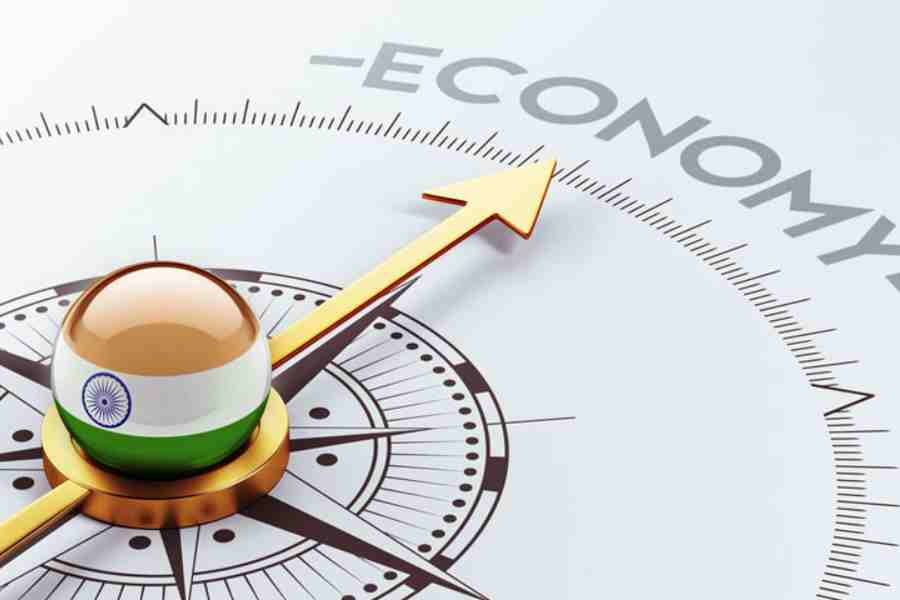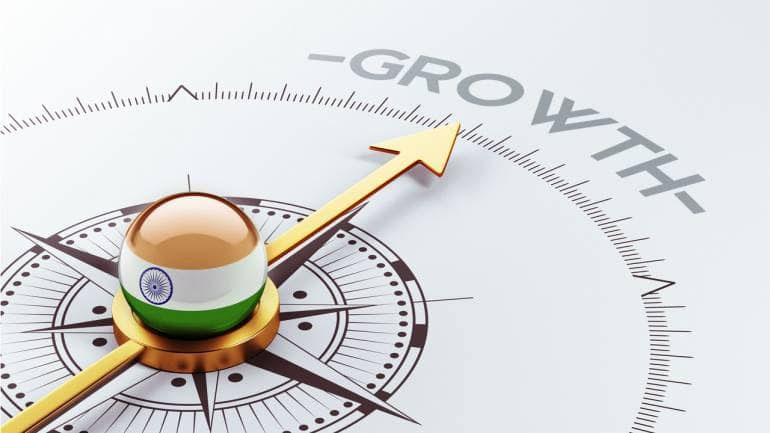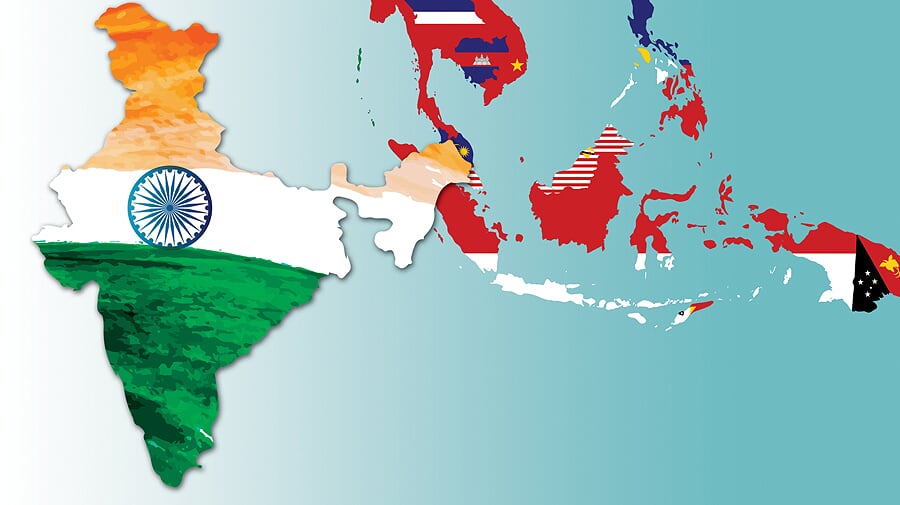DC Pathak
Some academicians describe economics as science because it submits to facts, measures up to logic, and defines principles that are lasting enough even in the face of a shifting global scenario. However, economic theories abound to the extent that an economist can get away with propounding personal views as ‘findings’ without having to prove any of those as viable ‘principles’ that could be explained to a person with an average intellect, in simple stipulations.
Unlike science, however, economics gets mixed up with politics, often producing an unrealistic play of supply and demand and creating confusion between the role of the state and the efforts of an individual.
Economic growth of the nation should translate into some betterment of life for the citizens; state funding should give primacy to infrastructure development, health, and education as progress leads to lasting benefit for all concerned; growth should get intrinsically linked to the creation of opportunities; the policy framework should not permit any distinction of class, creed, or region during its implementation; and finally, economic growth should become ‘self-dependent’ as far as possible, not totally determined by trends in the world outside. How these five paradigms are working out is a matter that needs to be closely examined.
There is a perpetual debate on the interconnectivity between GDP and per capita income, as the two signify the economic growth of the country and the economic well-being of its people, respectively, and it is natural to expect that the former somewhere served the cause of the latter. GDP accounts for the total value of goods and services generated by a nation, while per capita income defines the average income per day or per annum of the individual citizens of that country. Per capita income is the most important factor in international economic comparisons.
It is obvious that the size of the population and the ability of the people to contribute to economic growth would both count for a meaningful link between these two indicators of the state’s economy. Even if a nation has a high GDP, its residents may not necessarily have high standards of living. Countries with smaller populations and a good GDP are likely to boost the economic well-being of their citizens more effectively than a large, populous nation like India could.
Policies have to ensure that even if fewer capitalists owned the bulk of the means of production, there is a healthy and adequate ‘trickle down’ of wealth not only into the hands of the ‘workers’ but also, through a check on stark monopolies and other means, to the people in general.
It is instructive to note that the demise of international communism proved how state-controlled economies would not work. A democratic dispensation combines freedom of enterprise with state-sponsored public welfare measures, and there should be no dogmatic approaches to this fundamental aspect of economic growth. The latest Indian budget narrows the deficit to 4.9 percent of GDP while it plans to spend a package of $24 billion on boosting jobs. This is apparently a move to establish a healthy correlation between GDP and per capita income.

Economic development of a nation calls for building the infrastructure of transport, communications, and digital connectivity, places emphasis on MSMEs to generate employment, ensures a spread out of production, encourages start-ups that give fillip to the process of economic empowerment of the people through personal initiatives, and establishes a match between GDP and per capita income. This has to become a part of state policy that favours a free market economy based on competitiveness but also provides for a minimal guarantee of special support for the weak and the poor.
Even a developed country like the US had a system of extending state support through unemployment dole to those who ran into a situation of lack of earnings. This is done through the US Department of Labour’s unemployment insurance scheme, which provides unemployment benefits to eligible workers who became unemployed through no fault of their own. This is a joint state-federal programme. While investment in infrastructure generates employment, funding for health and education brings in the benefit of a demographic dividend by enhancing the employability of the youth.
In India, health and education should be declared strategic sectors at par with national security responsibilities so that the Centre should become the prime driver of initiatives and funding policies, of course with adequate support from the state governments.
In the new budget of India, infrastructure spending is pitched at a record Rs 11 lakh crore. Measures to boost MSMEs, including a new credit guarantee scheme, have been announced, and a boost of 52 percent has been given in the budget of the Ministry of Electronics and Information Technology for the development of the digital base in the country. All this should facilitate long-term economic advancement.
Democratic expansion of economic opportunities is the mandate of growth today. This cannot happen without the public and private sectors competing with each other on the merits of delivery and organisational culture. It is good that India is emphasising the PP Partnership model in many fields and carving a new pathway to progress.
Economic growth calls for both FDI and domestic funding, and state policy has to concentrate on promoting ‘ease of doing business’ for them. India is consciously working for that, among other things, through a ‘single window clearance’. This can help to present this country as a successful competitor of China in terms of inviting investment from global players.
As mentioned earlier, the economic success of India would substantially depend on the growth of MSMEs and entrepreneurial ventures, which would require the right business climate and government backing. They would expand the ambit of employment and contribute to both GDP and per capita income.
The government has facilitated the grant of bank loans for businesses, education, and startups and smoothed digital transactions to lend speed to all business and commerce activity. In the new budget, internship opportunities for 1 crore youth in 500 top firms have been provided through necessary funding, and this would add to per capita income by enhancing employment prospects.
The business climate is adversely affected by inadequacies in law and order management. Unevenness on this front across the country is a cause for concern from the point of view of economic growth, and there is a dire need for the Centre to have a greater oversight of the two top functionaries of the state governments—DGPs and Chief Secretaries—who are together ultimately accountable for the standards of law and order upkeep in the states whose governments have been constitutionally assigned this responsibility. This duty clearly lies above politics.
Unfortunately, in the political environment prevailing after the recent parliamentary election, there is a revival of caste, religious, and regional divides in the country, and one hopes this is not allowed to come in the way of economic development that was based on ‘sabka saath sabka vikas’.
Secularism and equality are built into India’s governance, which rests on ‘one man, one vote’, rejection of any denominational stamp on the government, and declaring equality before the law as well as equality as the beneficiaries of the policies of the government. Economic policy can never be sectarian or divisive, and reservations, if any, have to be subject to the stipulation that their beneficiaries do not belong to the ‘creamy layer’.
India is rightly trying to move people away from government ‘doles’ and encouraging them to earn their livelihood through honest initiatives and hard work.
Prime Minister Narendra Modi’s regime deserves praise for raising the slogans ‘vocal for local’ and ‘Atmanirbhar Bharat’ as the mandate for economic advancement, and this is beginning to make an impact already. ‘Vocal for local’ was in historical consonance with India’s past when ‘village economies’ flourished here—even a barter system prevailed then—and made communities happy without trapping them into induced cycles of ‘supply and demand’.
Of course, India had to open up to the global markets and find its own trade balance with other countries. India has shown remarkable capabilities in keeping pace with science and technology; it has an acknowledged leadership status in the world as far as information technology and its latest offspring, artificial intelligence (AI), are concerned. This country is therefore eminently suitable for working out the mandate of ‘vocal for local’ to its complete advantage and pressing its economic partners in the international community to accept the condition that foreign investment in our market will get ‘production’ done on our own soil as far as possible.
The economic growth of India has certainly a positive outlook, as the country understands global trends and has shown the political will to follow policies that would not allow any world powers to take unfair advantage of this country. It is good to see that India is headed towards becoming the third largest economy in the world after the US and China over time.




